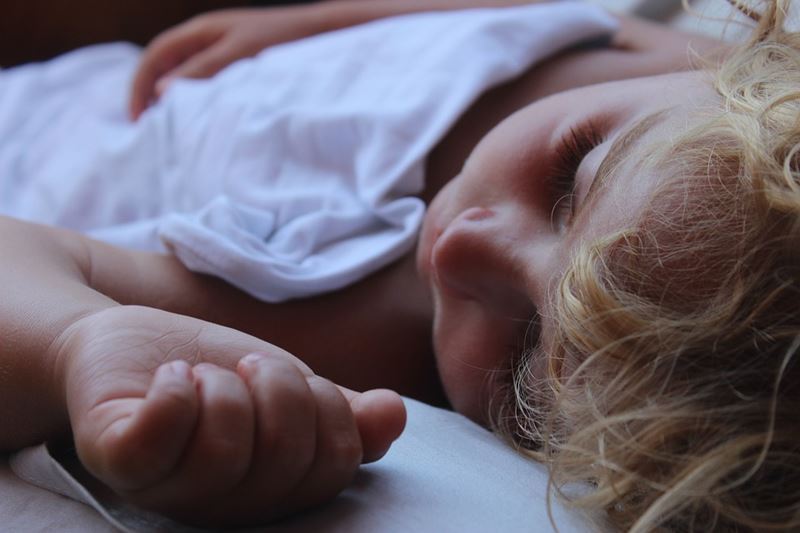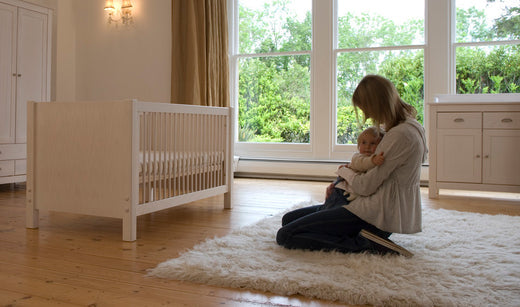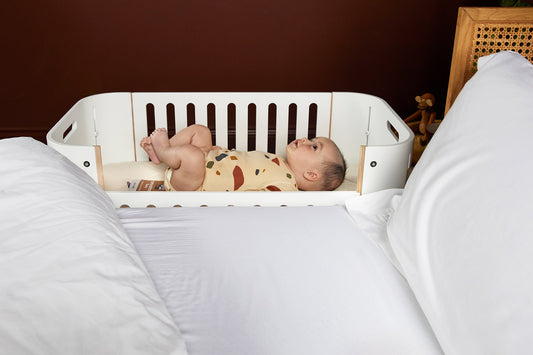Sleep is the primary activity of the brain during early development.
By the age of 2 years, the average child has spent more time asleep than awake with an average of 54% of its time asleep. In preschool children, this divide of sleep-wake time is roughly equal and drops to 40% in school age children. The high proportion of time spent asleep, both in children and adults, indicates the importance of this activity for both physical and mental health. As one sleep expert put it “If sleep does not serve an absolutely vital function, then it is the biggest mistake the evolutionary process has ever made,” (Rechtschaffen, 1998).
Evidence suggests poor sleep habits from an early age are linked to long-term sleep problems so setting good sleep habits in children is vital. Lack of sleep has been linked to a number of physical and mental health problems in children. Reduced sleep is associated with childhood obesity, depression, hyperactivity and attention deficit hyperactivity disorder (ADHD). It has also been linked to poor academic performance, daytime sleepiness, problems with alertness and concentration, and increased rates of absenteeism in school.
Our circadian rhythm, or body clock, is one of the processes that control when we sleep and the duration of our sleep. This circadian rhythm starts to develop around 6 weeks of age and is not fully developed until about 2 years of age. Newborn babies have irregular sleeping patterns ranging from 10.5 to 18 hours across the day and night, with sleep periods lasting anything from a few minutes to several hours, alternating with 1 to 3 hours awake. By 6 months of age there is a more sustained period of sleep at night, with about 50% of babies sleeping through the night and about 90% of 12 month olds achieving this milestone.
Average sleep durations can give an idea of what to aim for at different age groups, however it’s important to remember each individual differs on how much sleep they need and when they sleep so there is no fixed recommended amount. The key is to be aware of your child’s daytime behaviour and how it is affected by lack of sleep.
Recommended sleep durations by the American Academy of Sleep medicine (AASM)
| Age group | Average sleep duration |
| 4-12 months | 12-16 hours (including naps) |
| 1-2 years | 11-14 hours (including naps) |
| 3-5 years | 10-13 hours (including naps) |
| 6-12 years | 9-12 hours |
| 13-18 years | 8-10 hours |
Newborns and babies (0-1 years)
Babies need to learn to fall asleep independently at bedtime. If they learn this important step, they will learn to self-soothe and get themselves back to sleep on their own when they wake during the night. This skill of learning to fall asleep independently and self-soothing is not an innate ability. To encourage this, put your baby to bed when sleepy but not when asleep. It is important to understand your child’s sign’s of sleepiness: these might be fussing, crying, rubbing their eyes, or individual gestures. Remember to position a baby on their back, according to guidelines, to reduce the risk of Sudden infant death syndrome (SIDS) - sometimes known as "cot death".
As your baby’s circadian rhythm starts to develop, exposure to light and noise during the day, together with some stimulating activities can encourage them to stay awake in daylight hours. Equally you can encourage your baby to sleep more at night by reducing noise and light before and during bedtime and establishing a relaxing bedtime routine. With a regular bedtime routine, your baby will start to learn “sleep onset associations”. This means they will begin to associate certain activities with going to bed and falling asleep, and these associations will set off the physiological processes needed for sleep. Remember these sleep habits take time to establish but you are aiming for the long term. Sleep can be disrupted by teething, illness, and separation anxiety in older babies.
Toddlers and preschoolers (1-5 years)
The same rules apply; maintain a consistent bedtime routine to encourage relaxation. Daytime naps should be consistent, (most toddlers have given up their second nap by 18 months) but not too close to bedtime. Maintain a consistent bedroom environment through the night, every night; if your child wakes in the night and something in the environment has changed from when they nodded off, this will be confusing so consider lighting, noise, and security objects.
Common sleep problems include resisting bedtime, night fears and night awakenings. These problems are due to the development of the child’s imagination, cognitive and social skills, separation anxiety and the drive for autonomy. In addition, the move from cot to bed, more advanced motor development, and their ability to get out of bed can create problems. Consistent boundaries for bedtime behaviour need to be established and communicated.
In preschoolers who can delay gratification, rewarding behaviour with stickers and reward charts is a great way to reinforce the desired behaviour. Problems at bedtime and during the night might be a stress response so take into account events going on at home or in the child’s social environment.
School-aged children (5-12 years)
Sleep problems are common in this age group so education about health sleep habits is essential. In addition, TV and computer use is common and this can lead to sleep problems, not only because of the blue light emission from these devices that can interfere with the circadian rhythm, but also because these activities tend to be stimulating. TV, tablet and phone use too close to bedtime has been linked to problems getting to sleep and shorter sleep so finish any screen activities a few hours before bed. Good wind-down activities are reading, listening to music, colouring or having a bath. Watch out for caffeine in this age group, particularly in the afternoon or evening and make sure your child is not going to be hungry so a light snack an hour before bed can help.
Sometimes bedtime resistance may be a way of spending extra time with you so make sure you give each child some individual time earlier in the day. If your child has things on their mind at bedtime which are contributing towards sleep problems, it’s worth setting aside some time earlier in the day to go over any worries together.
For more sleep advice from Naturalmat’s Sleep Expert, Christabel Majendie, visit www.naturalmat.co.uk/blog/babyandchild










